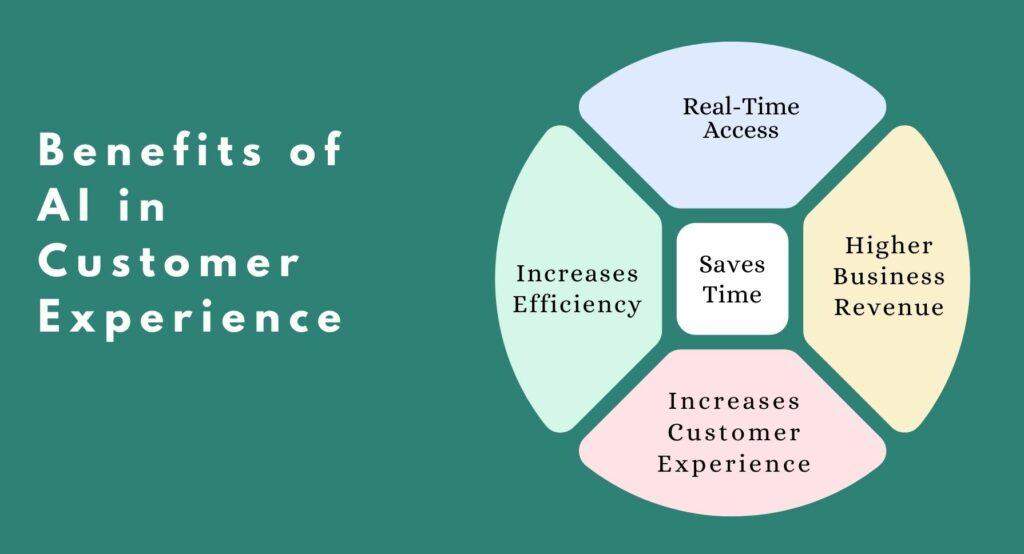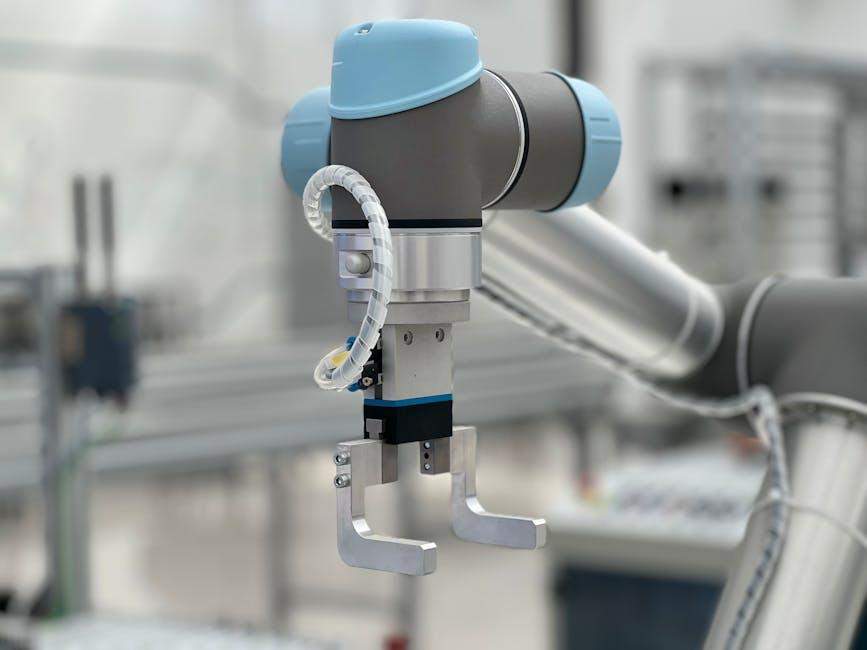In a world where innovation and technology dance hand in hand, artificial intelligence (AI) is taking center stage, revolutionizing the way businesses operate and interact with their customers. From automating mundane tasks to providing deep insights into consumer behavior, AI is not just a passing trend; it’s a game-changer. In this listicle, we’ll explore 5 smart ways AI is transforming the business landscape, highlighting the practical applications that are reshaping industries, enhancing efficiency, and driving growth. Whether you’re a business owner looking to stay ahead of the curve or simply curious about the future of work, prepare to uncover valuable insights and strategies that can elevate your understanding of AI in today’s commercial arena. Buckle up—these innovations may just inspire your next big idea!
1) Predictive Analytics: AI-driven predictive analytics tools are empowering businesses to make informed decisions by analyzing historical data and forecasting future trends. This capability allows companies to anticipate market changes, optimize inventory, and tailor marketing strategies, ultimately enhancing profitability and efficiency
In the rapidly evolving landscape of business, harnessing the power of AI-driven predictive analytics tools has transformed the way organizations operate. By meticulously analyzing historical data, these tools provide invaluable insights that can significantly influence decision-making processes. Companies can now forecast future trends with remarkable accuracy, allowing them to navigate market fluctuations proactively. For instance, businesses can utilize predictive analytics to identify seasonal demand patterns, ensuring that they are well-prepared for peaks in consumer interest. This foresight enables companies to optimize their inventory management, reducing waste and lowering holding costs, which directly contributes to a healthier bottom line.
Furthermore, the ability to tailor marketing strategies based on predictive insights has become a game-changer. Businesses can segment their customer base more effectively, targeting specific groups with personalized marketing campaigns that resonate with their preferences and behaviors. This approach not only enhances customer satisfaction but also drives higher conversion rates. A well-structured comparison table can highlight the advantages of predictive analytics in various business sectors, illustrating how this technology fosters improvements in decision-making, efficiency, and overall profitability.
| Business Sector | Benefits of Predictive Analytics |
|---|---|
| Retail | Optimized inventory based on demand forecasts |
| Finance | Improved risk assessment and fraud detection |
| Manufacturing | Enhanced production scheduling and maintenance planning |
| Marketing | Targeted campaigns leading to higher ROI |

2) Enhanced Customer Experience: AI is reshaping customer interactions through chatbots and virtual assistants that provide 24/7 support. These technologies not only improve response times but also gather insights into customer preferences, enabling businesses to personalize their offerings and strengthen brand loyalty
In today’s competitive landscape, businesses are taking customer engagement to the next level by harnessing the power of AI-driven technologies. Chatbots and virtual assistants are now commonplace, providing seamless 24/7 support that not only enhances response times but also offers a personalized experience. With AI, companies can consistently respond to inquiries, allowing customers to receive real-time assistance without having to wait for human agents. This leads to higher customer satisfaction and reduces the burden on support teams, empowering them to focus on more complex issues that require human intervention.
Furthermore, these AI tools are adept at collecting valuable data on customer interactions, preferences, and behaviors. By analyzing this information, businesses can tailor their products and services to better meet the specific needs of their clientele. The result is an enhanced shopping experience that fosters loyalty and boosts repeat business. Here’s a quick look at how AI is improving customer interactions:
| Feature | Benefit |
|---|---|
| Instant Responses | Eliminates long wait times, ensuring queries are addressed promptly. |
| Personalized Recommendations | Enhances customer engagement by suggesting tailored products based on past behavior. |
| Data-Driven Insights | Informs marketing strategies and product development with real customer feedback. |

3) Streamlined Operations: Automation powered by AI is revolutionizing operational efficiency across industries. From supply chain management to human resources, AI can take over repetitive tasks, allowing employees to focus on more strategic initiatives, driving innovation and productivity within the organization
In today’s fast-paced business environment, the ability to streamline operations through automation has become a critical competitive advantage. By integrating AI technologies into various processes, organizations can effectively reduce human error and enhance efficiency. Supply chain management is one of the areas where AI shines; it leverages predictive analytics to forecast demand, optimize inventory levels, and streamline logistics. AI-driven tools can analyze data in real-time, ensuring that goods flow seamlessly from suppliers to customers while minimizing costs and delays.
Moreover, human resources departments are also feeling the impact of AI automation. Employee onboarding and routine administrative tasks can be managed with intelligent systems, allowing HR teams to allocate their time and resources toward strategic initiatives such as talent development and employee engagement. By automating repetitive tasks like scheduling, payroll processing, and compliance checks, AI empowers teams to focus on building a more dynamic workplace. In this way, the fusion of AI and operations is not just about efficiency; it’s about fostering an innovative culture that drives growth and transformation.

4) Intelligent Recruitment: AI is transforming the hiring landscape by using algorithms to screen resumes, assess candidates, and predict job performance. This not only speeds up the recruitment process but also helps organizations identify the best talent, ultimately leading to better hiring decisions and a more dynamic workforce
In the realm of talent acquisition, AI technologies are setting a new standard for efficiency and effectiveness. By implementing algorithms to automatically screen resumes, organizations can swiftly eliminate unsuitable candidates from the hiring process. This not only significantly reduces the time spent on initial assessments but also minimizes human bias, leading to a more equitable selection of applicants. Furthermore, AI-driven systems can evaluate candidate skills and experience in real-time, providing a more comprehensive understanding of potential fits for specific roles.
Beyond just sorting through resumes, AI is evolving to include sophisticated predictive analytics that assess job performance based on historical data. This empowers employers to make decisions based on a candidate’s predicted success, ultimately enhancing the quality of hires. As companies lean into this technology, they can expect to see a transformation in workforce dynamics, characterized by a more diverse and talented employee pool. Key benefits of intelligent recruitment include:
- Enhanced speed of the hiring process
- Improved accuracy in assessing candidate fit
- Reduced workforce turnover rates
- Increased diversity in hiring
Final Thoughts
As we step into an era defined by rapid technological advancement, it’s clear that artificial intelligence is more than just a fleeting trend; it’s a cornerstone of modern business strategy. The five smart ways we’ve explored today illustrate how AI is not merely reshaping industries but revolutionizing the very foundations of how businesses operate, connect, and thrive.
From enhancing customer experiences to optimizing supply chain logistics, AI empowers companies with data-driven insights that foster innovation and drive efficiency. While the tools and technologies may evolve, the principles of adaptability and forward-thinking remain timeless.
As you consider the future of your business, remember that embracing AI isn’t just about keeping up with the latest trends; it’s about positioning yourself at the forefront of a transformative wave that is already in motion. The possibilities are endless, and the potential for growth and improvement is limited only by your imagination.
So, whether you’re a startup aiming for the stars or an established brand looking to refine your strategies, now is the perfect time to harness the power of AI. Stay curious, stay informed, and watch as the landscape continues to evolve. The future is not just arriving—it’s being actively built, one intelligent solution at a time.




